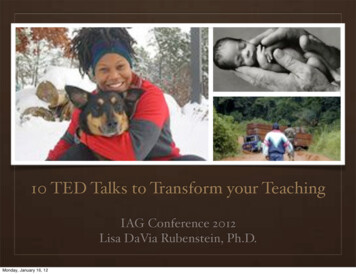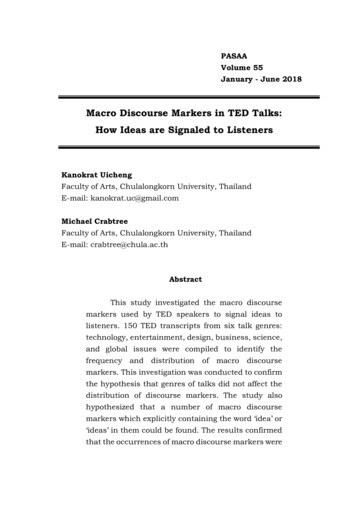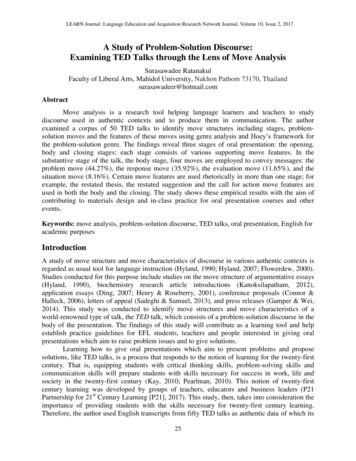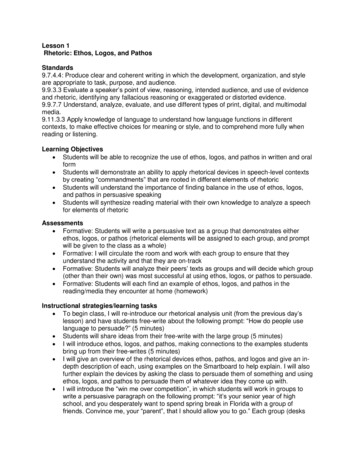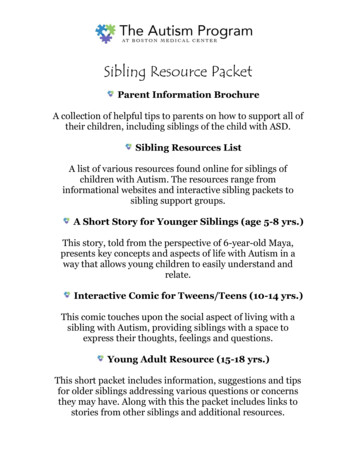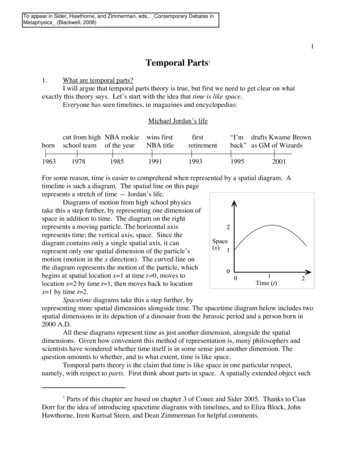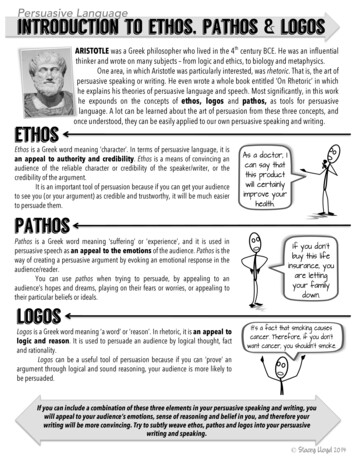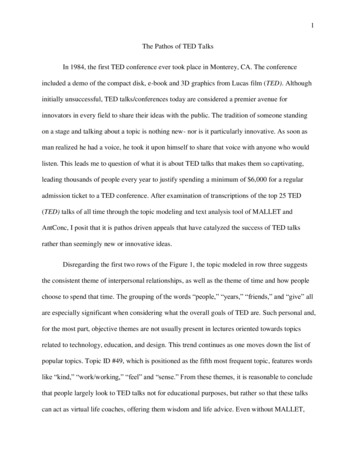
Transcription
1The Pathos of TED TalksIn 1984, the first TED conference ever took place in Monterey, CA. The conferenceincluded a demo of the compact disk, e-book and 3D graphics from Lucas film (TED). Althoughinitially unsuccessful, TED talks/conferences today are considered a premier avenue forinnovators in every field to share their ideas with the public. The tradition of someone standingon a stage and talking about a topic is nothing new- nor is it particularly innovative. As soon asman realized he had a voice, he took it upon himself to share that voice with anyone who wouldlisten. This leads me to question of what it is about TED talks that makes them so captivating,leading thousands of people every year to justify spending a minimum of 6,000 for a regularadmission ticket to a TED conference. After examination of transcriptions of the top 25 TED(TED) talks of all time through the topic modeling and text analysis tool of MALLET andAntConc, I posit that it is pathos driven appeals that have catalyzed the success of TED talksrather than seemingly new or innovative ideas.Disregarding the first two rows of the Figure 1, the topic modeled in row three suggeststhe consistent theme of interpersonal relationships, as well as the theme of time and how peoplechoose to spend that time. The grouping of the words “people,” “years,” “friends,” and “give” allare especially significant when considering what the overall goals of TED are. Such personal and,for the most part, objective themes are not usually present in lectures oriented towards topicsrelated to technology, education, and design. This trend continues as one moves down the list ofpopular topics. Topic ID #49, which is positioned as the fifth most frequent topic, features wordslike “kind,” “work/working,” “feel” and “sense.” From these themes, it is reasonable to concludethat people largely look to TED talks not for educational purposes, but rather so that these talkscan act as virtual life coaches, offering them wisdom and life advice. Even without MALLET,
2this function of TED talks as virtual life coaches is clear after just skimming through the titles ofthe top 25 TED talks. While TED offers more educational and informative videos, the top 25consists of videos like “How to Make Stress your Friend” by Kelly McGonigal and “YourElusive Creative Genius” by Elizabeth Gilbert, clearly aiming for a more motivational ratherthan academic theme.Figure 1: This Microsoft Excel spreadsheet was generated using MALLET. The frequencies were then sorted from highest tolowest
3To further elaborate on the theme oftime and how people spend their time,one can also examine Figure 2- the mostfrequent word list. Secondary only to “people,”“time” retains high in frequency andsignificance even when processed through adifferent text analysis software. However, itshould also be taken into account that much ofthe reason for the high frequency of the word“time” is because of the anecdotal nature ofFigure 2: Word list compiled by Antconc showing words forgreatest to least frequency, excluding common stop words like"the," "a," and annotations in the transcription like "laughter"and "applause."many of the TED talk transcriptions. Thisanecdotal nature lends itself to usage of “time”in phrases like “at that time” and “first time,”rather than the actual discussion of the conceptof time (Figure 4).Other aspects of the world list compiledby AntConc are consistent with the topicsmodeled by MALLET. For example, bothprograms feature positive attribute words like“happy,” “happiness,” “good,” and “positive,”while returning low frequencies of morenegatively attributed words like “bad,”“negative,” “sad,” or “depression.” It is a reasonable theory that because of the TED presentersFigure 3: Continuation of Figure 2
4adept use of pathos to sympathize and connect with the audience, audiences of TED talks oftensee themselves in thepresenters andtherefore are morereceptive to the use ofpositive attributes todescribe theirexperiences. Audiencesoften project theirFigure 4 Concordance of the word "time" in the top 25 TED talksown desire and ambitions onto whatever form of media they are consuming- including TED talks.Therefore, it follows logically that audiences want to see the subject of their media portrayed in apositive light, because it means that they themselves have those same positive attributes and byextension have the same potential for greatness that many of the TED presenters do. Audiences’affinity for TED talks featuring positive attributes may also be a commentary on the generalhedonistic/ pleasure based perspective that currently thrives in the age of mass media andconsumerism.Although I suggest that it is the sympathetic/empathetic effect that TED presenters createthrough invoking a common human experience in topics like “time” and “personal relationships”and not the originality of the content itself that propels certain TED talks to success, this is not tosay that the TED presenters are not innovative and/or original. I only imply that the originalityand substance of a TED talk is secondary to the way it makes audience members feel. From thisimplication, one can deduce that the purpose of TED talks may be shifting from their original
5intention as a means of sharing innovative ideas with the public in an easy to understand lecture,to virtual life coaches that people turn to for the purpose of assuaging their own fears. This shiftin the purpose of TED talks is not necessarily good or bad, however, it does seem to be amicrocosm for what is happening in society at a larger scale. On a larger scale, mass media andconsumerism has brought about the need for instant gratification in all aspects of life, even inareas concerning complex topics like those covered in the top 25 TED talks like the passage oftime and the formation of personal relationships. As a result, people turn to TED talks and expectthese 10-20 minute videos to serve as solutions to deep rooted fears and anxieties. Of course, it ishuman nature to seek comfort and familiarity. However, for the advancement of society, it ismore important that people step out of this comfort zone and seek education over comfort, evenif this require more mental effort.
6Works Cited“History of TED.” TED, TED (Technology, Education, Design), of-ted“25 Most Popular.” TED, TED (Technology, Education, Design), https://www.ted.com/playlists/171/the most popular talks of all
areas concerning complex topics like those covered in the top 25 TED talks like the passage of time and the formation of personal relationships. As a result, people turn to TED talks and expect these 10-20 minute videos to serve as solutions to deep rooted fears and anxieties. Of course, it is human nature to seek comfort and familiarity.

